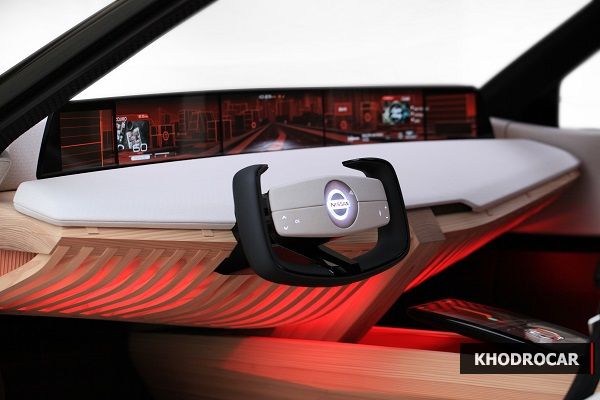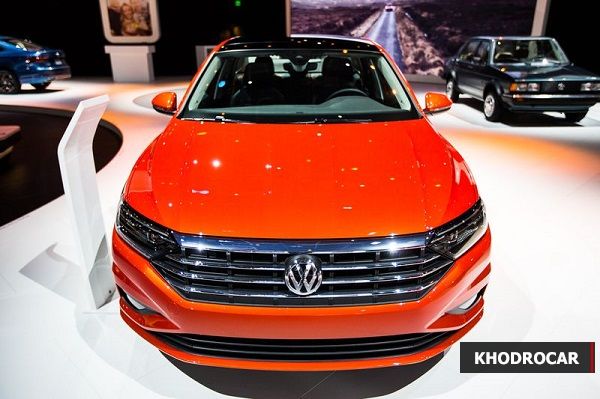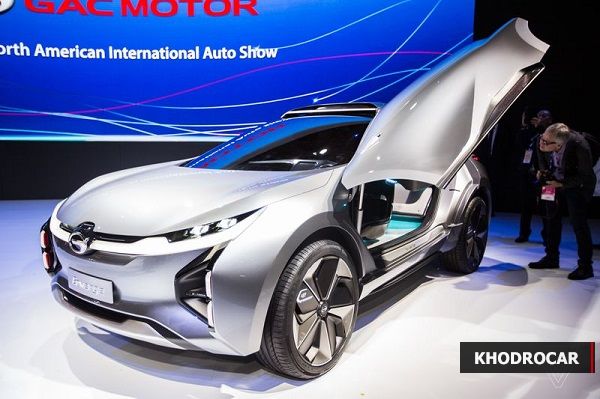The best, worst, and weirdest cars from the 2018 Detroit Auto Show
The Detroit Auto Show is considered by many to be the biggest car event of the year. And while we got a handful of interesting new reveals this year, like the Mercedes G-Class and a trio of new trucks from the Big Three, the show was less about the new models on display, and more about what the automakers were (and were not) saying.
Khodrocar - If you looked past all the gleaming new trucks and SUVs, you would hear GM announcing its plan to release a self-driving concept car without a steering wheel or pedals in 2019, Ford talking about investing $11 billion in electric car production (more than double its previous commitment), Ferrari promising to build a battery-electric supercar, and many of the big carmakers talking about the hundreds of millions of dollars they expect to lose as a result of investments in smart mobility.
It was a weird year, but there were still a bunch of cars that piqued our interest. Here’s our list of the best, worst, and weirdest of the 2018 North American International Auto Show.
It was a weird year, but there were still a bunch of cars that piqued our interest. Here’s our list of the best, worst, and weirdest of the 2018 North American International Auto Show.
Best in-car personal assistant: Nissan Xmotion’s koi fish

Every year, more and more automakers announce plans to integrate voice-activated assistants like Amazon’s Alexa or Google Assistant. While Nissan has its own proprietary voice recognition system (it has said it would begin use Alexa in some of its models as well), it went a different route with the Xmotion SUV concept that it revealed at the Detroit Auto Show: a koi fish. My impulse to blast Nissan for overdoing it with the screens — there are seven! — was washed away when I saw that beautiful fish swimming from screen to screen. Nissan says the fish will be like your butler, intelligently programming the interior cabin conditions, music, and more based on the destination and user preferences. It will also serve as a bit of a tour guide while the car is in autonomous mode, providing information about the current route and potential stopovers while switching lanes and handling driving duties. It will also tell you stories — which, I mean, come on. The Xmotion is just a "design study,” so there’s no guarantee the fish will be swimming onto the screen of your Altima anytime soon.
The dullest car lots of people will buy: VW Jetta

The most boring car of the show may have actually been the new Kia Forte, which I didn’t even notice until I walked up to the Stinger and saw all the Forte signage on the company’s stand. But the Volkswagen Jetta is perhaps a more significant one. It’s long been VW’s most popular in the US, and it finally got some important tech, including a configurable digital dash like an Audi’s, and a (fingerprint-prone) large touchscreen for the infotainment system. But its shape is square and dull, and its detailing is fussy and awkward. Being based on the very good Golf and A3, it may drive well, but it looks like VW’s interpretation of the dull sedans that Americans buy / rent. So I guess it should do well for their American dealers.
Weirdest car that grows on you: Hyundai Veloster N

I was all set to dislike the 2019 Veloster: it still looks awkward, isn’t exactly plush, nor does it do anything remarkably interesting with its tech. Then the more powerful N showed up with its bright blue paint and red lip liner, and I can’t help but fall for this weird hatchback. Please be ridiculously fun to drive, please.
Worst car to take to the drive-through: GAC’s Enverge

It’s always fun when a little-known company comes to the auto show and makes a big splash. China’s GAC isn’t selling cars in the US yet, but it has plans to launch in 2019. This year, it showed off a couple of concepts: a crossover, and (of course) an electric car. The Enverge isn’t your typical EV, with pilar-to-pilar digital screens, augmented reality for passengers, and headlights that pop out as portable floodlights. You may want to think twice before driving this thing through the Starbucks drive-through, however, because the gull-wing doors don’t have windows. Pro: no trucker’s tan. Con: what if you get pulled over for speeding?
Most important company that didn’t show: Waymo
Last year, Google’s self-driving spinoff Waymo stirred up the show when it revealed its autonomous Chrysler Pacifica minivan. This year, the company kept its distance — even though it recently began testing its self-driving cars on Michigan’s icy roads. (CEO John Krafcik did make an unofficial appearance, eager to show off the minivan’s newly frosted look.) It was probably smart for Waymo to keep a low profile. If it had shown up, it likely would have been dodging daggers from the big automakers. After all, a recent scorecard has Waymo surging into second place in the race to build and deploy self-driving cars. It’s not winner-take-all competition, but with billions (if not trillions) of dollars at stake, the industry is watching Waymo closely to see what its next move will be.
Last year, Google’s self-driving spinoff Waymo stirred up the show when it revealed its autonomous Chrysler Pacifica minivan. This year, the company kept its distance — even though it recently began testing its self-driving cars on Michigan’s icy roads. (CEO John Krafcik did make an unofficial appearance, eager to show off the minivan’s newly frosted look.) It was probably smart for Waymo to keep a low profile. If it had shown up, it likely would have been dodging daggers from the big automakers. After all, a recent scorecard has Waymo surging into second place in the race to build and deploy self-driving cars. It’s not winner-take-all competition, but with billions (if not trillions) of dollars at stake, the industry is watching Waymo closely to see what its next move will be.
Latest News


